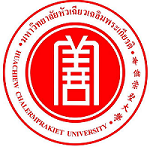Please use this identifier to cite or link to this item:
https://has.hcu.ac.th/jspui/handle/123456789/3783Full metadata record
| DC Field | Value | Language |
|---|---|---|
| dc.contributor.author | Kitti Prachuntasen | - |
| dc.contributor.author | Wongsa Laohasiriwong | - |
| dc.contributor.author | Amornrat Luenam | - |
| dc.contributor.author | กิตติ ประจันตเสน | - |
| dc.contributor.author | วงศา เล้าหศิริวงศ์ | - |
| dc.contributor.author | อมรรัตน์ ลือนาม | - |
| dc.contributor.other | Khon Kaen University. Faculty of Public Health | en |
| dc.contributor.other | Khon Kaen University. Training Center for Enhancing Quality of Life for Working Age People | en |
| dc.contributor.other | Huachiew Chalermprakiet University. Faculty of Public and Environmental Health | en |
| dc.date.accessioned | 2025-04-10T07:59:29Z | - |
| dc.date.available | 2025-04-10T07:59:29Z | - |
| dc.date.issued | 2018 | - |
| dc.identifier.citation | F1000Research 2018, 7:496 | en |
| dc.identifier.other | https://doi.org/10.12688/f1000research.13954.1 | - |
| dc.identifier.uri | https://has.hcu.ac.th/jspui/handle/123456789/3783 | - |
| dc.description | สามารถเข้าถึงบทความฉบับเต็ม (Full Text) ได้ที่ : https://f1000research.com/articles/7-496 | en |
| dc.description.abstract | Background: Previous studies indicated that social capital (SC) has an influence on quality of life (QOL). However, there are limited studies on how SC might associate with QOL among late adults and elderly in Thailand. Methods: This cross-sectional study was conducted among 1,148 participants who were identified by multistage random sampling from 4 provinces in the Northeast of Thailand. A self – administered questionnaire was developed and used to assess cognitive social capital (CSC), structural social capital (SSC), accessibility to health services, and socioeconomic status (SES) and QOL. The Generalized Linear Mixed Model (GLMM) was used to determine the association between SC and QOL when controlling for other covariates. Results: Only 41.03% (95%CI: 38.17 to 43.94) of the participants had good QOL. About half (50.26%) had high level of CSC, whereas only 36.15% had high level of SSC. The multivariate analysis indicated that having high levels of CSC and SSC was associated with good QOL. Other factors that were associated with having good QOL were aged <60 years old, monthly income ≥15,000 baht, adequate income, adequate physical activity, lived in the municipality, and had high level of accessibility to health services. Conclusion: Less than half of late adults and elderly had good QOL and high level of SSC. About half had high level of CSC. Both CSC and SSC had influence on QOL as well as gender, age, monthly income, financial status, physical activity, residential area, and accessibility to health services. | en |
| dc.language.iso | en_US | en |
| dc.subject | Social capital (Sociology) | en |
| dc.subject | ทุนทางสังคม | en |
| dc.subject | Quality of Life | en |
| dc.subject | คุณภาพชีวิต | en |
| dc.subject | ผู้สูงอายุ -- ไทย (ภาคตะวันออกเฉียงเหนือ) | en |
| dc.subject | Older people -- Thailand, Northeastern | en |
| dc.title | Social capital associate with quality of life among late adults and elderly population in the Northeast of Thailand | en |
| dc.type | Article | en |
| Appears in Collections: | Public and Environmental Health - Articles Journals | |
Files in This Item:
| File | Description | Size | Format | |
|---|---|---|---|---|
| Social-capital-associate-with-quality-of-life.pdf | 63.92 kB | Adobe PDF | View/Open |
Items in DSpace are protected by copyright, with all rights reserved, unless otherwise indicated.
